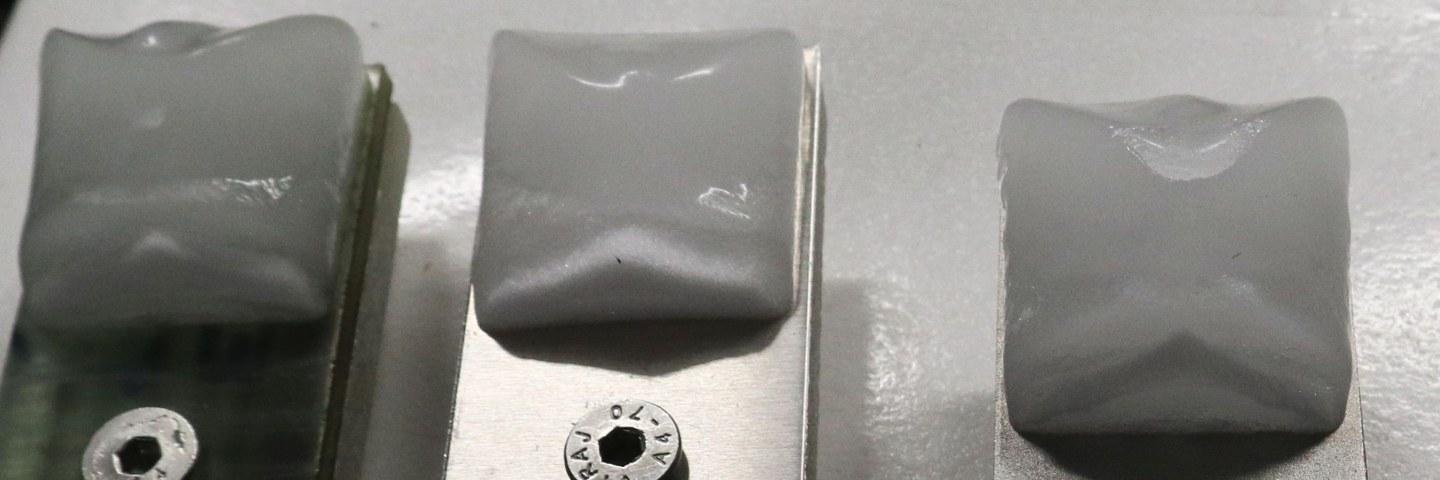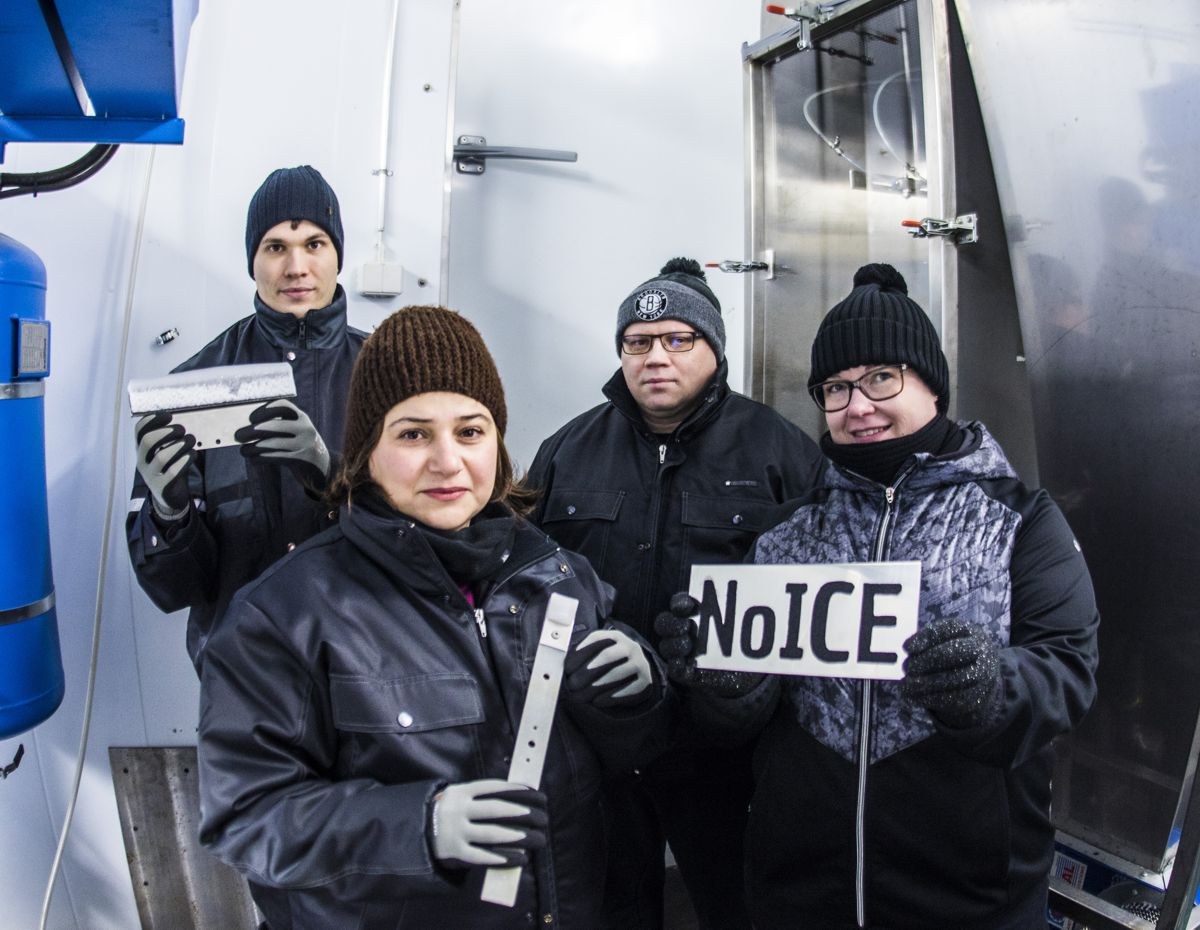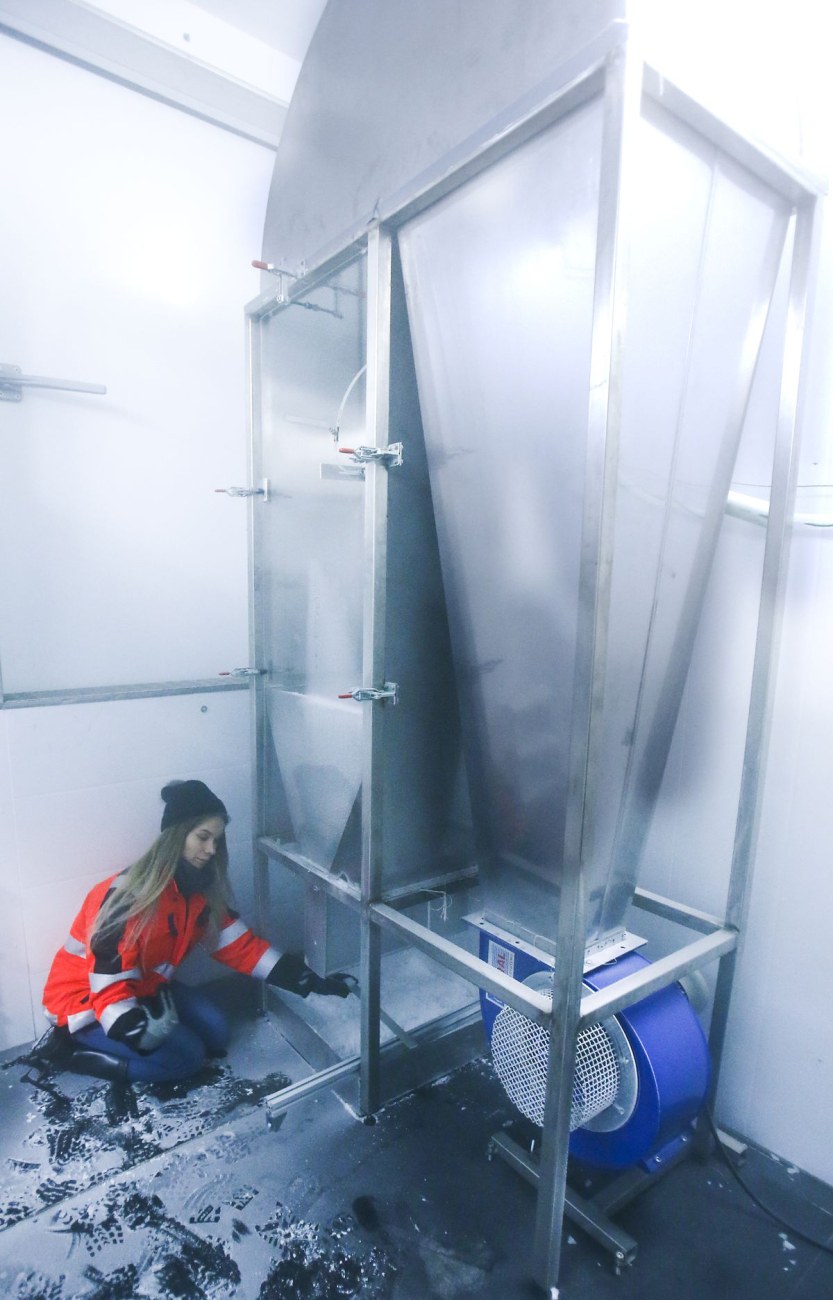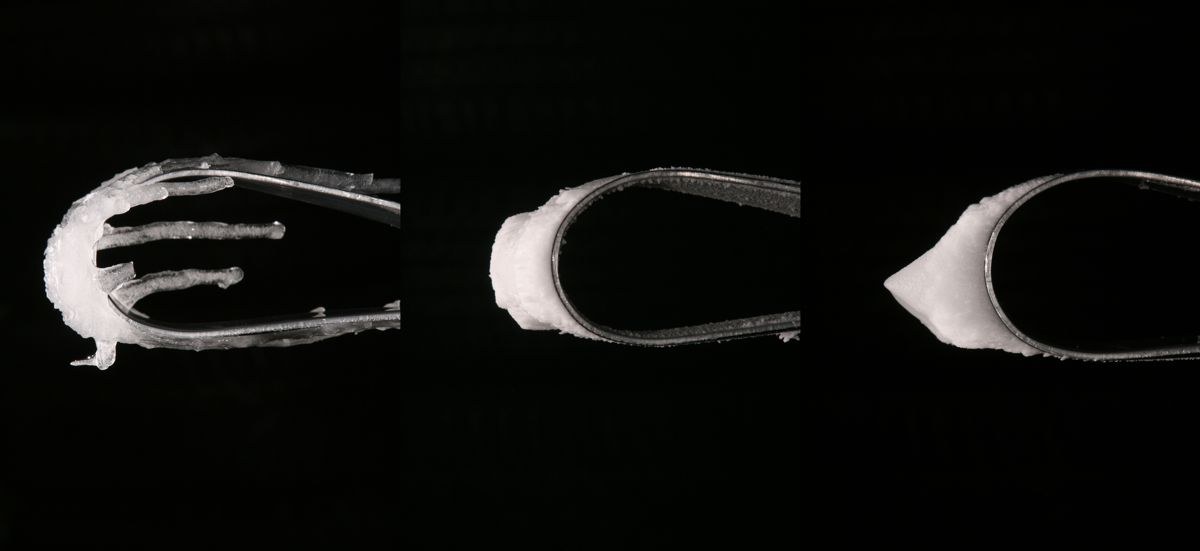
ICE Laboratory
ICE laboratory
ICE laboratory is placed in a cold climate room, where temperature can be set between room temperature and -40°C. Icing facilities include the Icing Wind Tunnel (IWiT) and the Centrifugal ice Adhesion Test (CAT). These are used for icing research and evaluation of icephobicity, icing behavior and icing phenomena. Test systems in the ICE laboratory support research and development of icephobic materials and surfaces as well as application-related testing possibilities. We can train users and offer key testing facilities for icing related projects.

Research infrastructure
ICE Laboratory is well-equiped for icing research and testing. Ice accretion, ice adhesion and ice removal can be investigated with the icing wind tunnel and the centrifugal ice adhesion tester. Icing conditions and testing setups can be modified for application-related conditions.
In addition to ICE Laboratory facilities, we have possibility to analyze droplet freezing behavior by measuring wettability with Peltier temperature control plate.
Icing Wind Tunnel (IWiT)
IWiT is used for ice accretion and icing characterization. Ice can be accreted in laboratory scale from supercooled microdroplets onto various surfaces and profiles to mimic natural ice formation and build-up. In the IWiT, common icing parameters (e.g., temperature, wind speed, droplet size) are established and set to make a specific type of ice (e.g., rime, mixed or glaze ice). Different ice types have their own characteristics, certain occurring regions in the nature. Different icing conditions can be simulated by varying icing parameters. For research purposes, ice can be accumulated for static icing evaluation or for the ice adhesion test (CAT). Furthermore, icephobicity of different materials, surfaces and coatings can be evaluated.
Main icing parameters:
- Droplet size: 25 – 1000 µm
- Wind speed: 0 – 25 m/s
- Temperature: -40°C – room temperature
- Liquid water content (LWC): 0 – 4.2 g/m3

Centrigucal ice Adhesion Test (CAT)
The adhesion between surface and ice is a complex and multifold interaction consisting wide range of variables. These variables depend on surface material properties, topographical characteristics, test method, ice type, and climate conditions. CAT is one commonly used method to examine ice adhesion strength between the ice and the tested surface. This system mimics ice shedding by centrifugal spinning. Ice for the test is accreted in the IWiT. During the CAT, the ice detachment is observed by sensors and the ice adhesion is calculated. CAT can be considered as representative test for evaluation of ice adhesion because it is fast, reliable, and informative.

For more information, contact us.
Research
Research is focused on the development of icephobic surfaces and coatings, studies of icing behavior of different materials and surfaces, understanding of ice affecting factors and their connections to other surface properties and development of icing test facilities.
More about research: Link to Coating Technologies Research Group
Publications
- V. Donadei, H. Koivuluoto, E. Sarlin, P. Vuoristo, Lubricated icephobic coatings prepared by flame spraying with hybrid feedstock injection, Surface and Coatings Technology, 403, 2020, 126396, DOI: 10.1016/j.surfcoat.2020.126396
- H. Koivuluoto, E. Hartikainen, H. Niemelä-Anttonen, Thermally Sprayed Coatings: Novel Surface Engineering Strategy Towards Icephobic Solutions, Materials, 13, 2020, 1434, DOI: 10.3390/ma13061434
- V. Donadei, H. Koivuluoto, E. Sarlin, P. Vuoristo, Icephobic Behaviour and Thermal Stability of Flame-Sprayed Polyethylene Coating: Effect of Process Parameters, Journal of Thermal Spray Technology, 29, 2020, p. 241-254, DOI: 10.1007/s11666-019-00947-0
- H. Niemelä-Anttonen, J. Kiilakoski, P. Vuoristo, H. Koivuluoto, Icephobic Performance of Different Surface Designs and Materials, IWAIS2019-Proceedings of the International Workshop on Atmospheric Icing of Structures, 23-28 June 2019, Reykjavik, Iceland, 5 p.
- V. Donadei, H. Koivuluoto, P.Vuoristo, Effect of Process Parameters on Properties of Flame-Sprayed Icephobic Polymer Coatings, ITSC2019-Proceedings of the International Thermal Spray Conference, F. Azarmi, Y. Lau, J. Veilleux, C. Widener, F. Toma, H. Koivuluoto, K. Balani, H.I. Li, K. Shinoda (Eds.), 26-29 May 2019, Yokohama, Japan, ASM International, p. 563-570
- H. Niemelä-Anttonen, H. Koivuluoto, M. Tuominen, H. Teisala, P. Juuti, J. Haapanen, J. Harra, C. Stenroos, J. Lahti, J. Kuusipalo, J.M. Mäkelä, P. Vuoristo, Icephobicity of Slippery Liquid Infused Porous Surfaces under Multiple Freeze–Thaw and Ice Accretion–Detachment Cycles, Advanced Materials Interfaces, 1800828, 2018, DOI: 10.1002/admi.201800828
- H. Niemelä-Anttonen, H. Koivuluoto, M. Kylmälahti, J. Laakso, P. Vuoristo, Thermally Sprayed Slippery and Icephobic Surfaces, ITSC2018-Proceedings of the International Thermal Spray Conference, F.Azarmi, K. Balani, T. Eden, T. Hussain, Y.-C. Lau, H. Li, K. Shinoda (Eds.), 7-10 May 2018, Orlando, Florida, USA, ASM International, p. 380-384
- H. Koivuluoto, C. Stenroos, M. Kylmälahti, M. Apostol, J. Kiilakoski, P. Vuoristo, Anti-Icing Behavior of Thermally Sprayed Polymer Coatings, Journal of Thermal Spray Technology, 26 (1-2) 2017, p. 150-160: DOI: 10.1007/s11666-016-0501-x
- P. Juuti, J. Haapanen, C. Stenroos, H. Niemelä-Anttonen, J. Harra, H. Koivuluoto, H. Teisala, J. Lahti, M. Tuominen, J. Kuusipalo, P. Vuoristo, J.M. Mäkelä, Achieving a slippery, liquid-infused porous surface with anti-icing properties by direct deposition of flame synthesized aerosol nanoparticles on a thermally fragile substrate, Applied Physics Letters, 110 (16) 2017, DOI: 10.1063/1.4981905
- H. Koivuluoto, C. Stenroos, R. Ruohomaa, G. Bolelli, L. Lusvarghi, P. Vuoristo, Research on icing behavior and ice adhesion testing of icephobic surfaces, IWAIS2015-Proceedings of the International Workshop on Atmospheric Icing of Structures, 28 June -3 July 2015, Uppsala, Sweden, 6 p.
Master Theses
- Y. Maly, Cold sprayed SLIPS coatings – A pathway towards process optimization and icephobicity, M.Sc. Thesis, Tampere University, Tampere, Finland, 2020, 62 p.
- H. Niemelä-Anttonen, Wettability and Anti-icing Properties of Slippery Liquid Infused Porous Surfaces, M.Sc. Thesis, Tampere University of Technology, Tampere, Finland, 2015, 103 p.
- C. Stenroos, Properties of icephobic surfaces in different icing conditions, Master Thesis, Tampere University of Technology, Tampere, Finland, 2015, 108 p.
- R. Ruohomaa. Icephobic surfaces – Development of icing test equipment and superhydrophobic coating prepared with solution precursor flame spray, Master Thesis, Tampere University of Technology, Tampere, Finland, 2014, 120 p.
Bachelor Theses
- E. Hartikainen, Termisesti ruiskutetut muovipinnoitteet arktisissa olosuhteissa, kandidaatintyö, Tampereen teknillinen yliopisto, 2017, 29 s. (in Finnish)




